How CaliforniaCorporate Controls The World

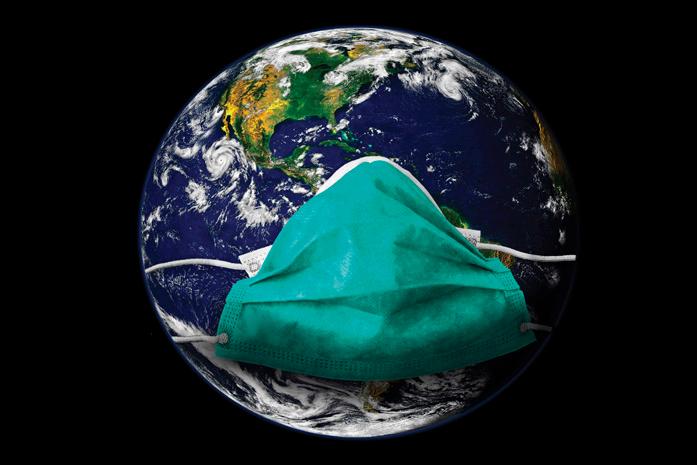
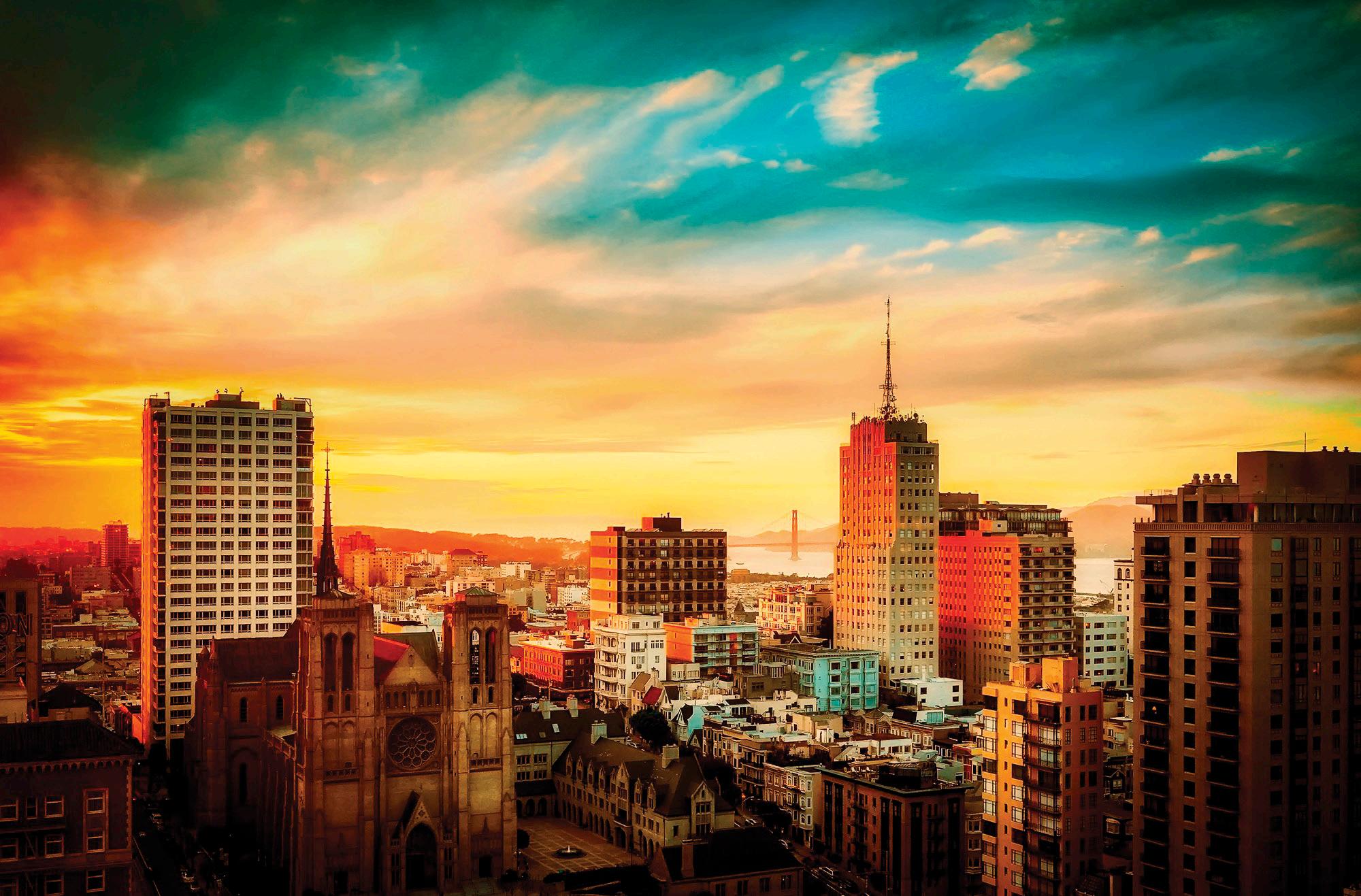
Apple. Google. Facebook. Netflix. Sony Pictures. Levi’s. Photoshop. Uber. Disney. ChatGPT…



There is an endless list of corporate giants from California that together match the power that empires from history enjoyed, such as the Roman and British Empires. If California is seen as a separate nation, it is more powerful than 190 countries. This special report gives you a comprehensive idea of how much Californian corporations have become a part of our lives.

Rs. 25/Bihar
Page 05
Read on Page 10 @EmpireDiaries Read on Page 07 (Turn to Page 2)
vs. Bangladesh The Illusion Of Prosperity Read on
Time To Set Julian Assange Free
Credit: Pixabay
Take The Mask Off, Let Science Breathe Easy Kashmir’s Lithium On Radar Of U.S. Lab That Helped Build Atom Bomb Read on Page 04 Chugalkhor Sourced from www.empirediaries.com Year 1 Issue 7 Delhi (NCR) May 1, 2023 (Fortnightly)
Chief Editor: Dr. Biswaroop Roy Chowdhury
How California Inc. Runs Your Life
Giant
Nadim Siraj
May 1, 2023:
Apple, Intel, Google, Yahoo!, Facebook, Twitter, Wikipedia, ChatGPT, HP, LinkedIn, Adobe, Zoom, Netflix, Warner Bros., Sony Pictures, Fox Entertainment, Disney, Universal Pictures, MetroGoldwyn-Mayer, Paramount Pictures, DC Comics, Visa, PayPal, eBay, Uber, SpaceX, Chevron, Cisco, Qualcomm, McAfee, Logitech, Seagate, SanDisk, Nvidia, Gap, Forever 21, Levi’s, Taco Bell…
What’s common to these companies, conglomerates, and brand names? No, they are not just American corporations. They are among the world’s most powerful brands that are all headquartered in the US state of California alone.
Over the past couple of decades since the internet revolution captured our imagination –and our brains – California Inc. has swelled into a gigantic tech and business clique. Many among us in India and elsewhere are unable to see it that way, but Corporate California is now collectively the biggest empire to influence and run our dayto-day life.
If we take a step back and look at a wider timeline of human civilisation, then this rising Californian Empire matches the charm, and sway that empires from the past enjoyed – such as the Romans, Greeks, British, Spanish, Russians, and Mongols.
The modus operandi of California Inc. is technically different from the way empires from the past ruled the world. This empire is a superorganism of corporate powers looking to perpetual do business in economies around the world, as against historical empires that were alliances of kingdoms, religious institutions, and
merchants annexing distant lands and physically governing the people.
MORE POWERFUL THAN 190 COUNTRIES
For quite some time, especially since the internet exploded onto the scene, California has been home to dozens of high-ranked Fortune 500 and Fortune 1000 companies. As a result of new-age corporate power deciding to get headquartered in California, the self-styled western US state has actually become more powerful than 190 countries.
If California is hypothetically considered as a nation, then by the end of 2022, it had emerged as the fifth largest economy on the planet – after the US, China, Japan, and Germany. In fact, it is estimated that by the end of this year, it could leapfrog Germany and become the world’s fourth biggest economy.
Most of us, however, don’t realise that we have become de facto citizens of this Californian Empire. We are largely unaware of this empirecolony relationship between us and the American state’s corporations because the mainstream media, academic institutions, think tanks, and pop-culture platforms only teach us to look at corporate power from the narrow lens of commerce and industry. Mainstream narratives hardly tell us that dozens of MNCs today are way stronger than most governments around the world.
Before we dig deep into the reason behind this basic knowledge gap, let’s take a close look at the transnational businesses that are based out of California, and how they have become an integral part of our lives.

UNDERSTANDING THE DNA: HOLLYWOOD EFFECT
Today, a vast majority of the world’s population of 8 billion people are charmed, dedicated, and lifelong customers of multiple California-based companies. Social media platforms, Hollywood movies, smart gadgets, essential software and hardware, payment gateways, fashion brands, fast food chains – the average Indian and the public around the world are hooked on to these offerings dished out by California-based corporate players.
Let’s start with the fanatical worldwide love for Hollywood. The Californian film industry is well known for scripting narratives that ensure moviegoers see America and the world in certain ways in which they want them to be seen.
There is a small but extremely powerful bunch of conglomerates and companies that produce films that are revered as the benchmark of cinema – primarily because of flashy marketing campaigns and the use of the English language, the superimposed lingua franca. These moviemaking companies are household names in most countries on the planet.
Columbia, Walt Disney, Paramount, Warner Bros., and Universal Pictures – these factories of influential films are located around the Hollywood area in California’s upscale Los Angeles.
These names are as popular as the movies that Hollywood beams into millions of multiplexes and drawing-room TVs across continents, such as the James Bond series, the Godfather trilogy, the Star Wars package, heroic war flicks, superhero franchises, action hits, spy thrillers, family soaps, animation artworks, and all sorts of other blockbusters.
Today, the worst-kept secret in geopolitics is how the US imperialist machine uses the CIAPentagon-Hollywood nexus to brainwash global audiences and control their hearts and minds, as this article exposes.
The American film industry, largely based out of Hollywood, was worth more than $95 billion in 2022, and it had reported a combined revenue of over $35 billion in 2019. The numbers point to the staggering amount of moolah that California’s movie factories make from global audiences.
The best way to get a sense of Hollywood’s grip on populations around the world is to take a look at the number of people who watch the Oscar Awards ceremony on TV every year – it was a whopping 18.7 million on the night of the 2023 ceremony.
UNDERSTANDING THE DNA: SOCIAL MEDIA IMPACT
The next major way in which California’s corporate class ends up controlling much of the world’s population is through social media. We live in times when most of us swear by smartphonebased, internet-powered platforms such as Facebook, WhatsApp, Instagram, Google search, Gmail, Google Maps, Wikipedia, Twitter, YouTube, Uber, LinkedIn, etc.
The majority of the world population, including a staggeringly high number of Indians, are hooked on to most of these so-called ‘social’ platforms right from the time they wake up till they hit the bed.
Posting our intimate details online, sharing one-on-one messages, microblogging political thoughts, watching viral videos, following maps on the phone, searching for products and offers, exchanging letters, hailing cabs – we do most of
Chugalkhor Times Delhi (NCR), May 1, 2023 | Year 1 • Issue 7 02
Credit: Pixabay
companies and conglomerates from California state together match the power of empires from the past – such as the Romans, the Greeks, the British, the Spanish, the Russians, and the Mongols. Here’s a look at how much they have become a part of our lives.
these activities on platforms owned by Big Tech giants headquartered in California.
These hugely popular tech companies are worshipped as modern marvels, but most of us are least conscious of how Corporate California ends up controlling and accessing our brains and ideas through their smart products and smart services.
Activist and former CIA worker Edward Snowden once famously said, “Businesses that make money by collecting and selling detailed records of private lives were once plainly described as ‘surveillance companies’. Their rebranding as ‘social media’ is the most successful deception since the [US] department of war became the department of defence.”



A look at the numbers gives a feel of the sheer size of California’s Big Tech giants. Alphabet, which owns Google and YouTube, recorded a revenue of $283 billion in 2022. Spearheaded by CEO Sundar Pichai, Alphabet had an employee strength of over 190,000 before recently announcing unpopular mass job cuts. The conglomerate’s assets were worth $365 billion last year.
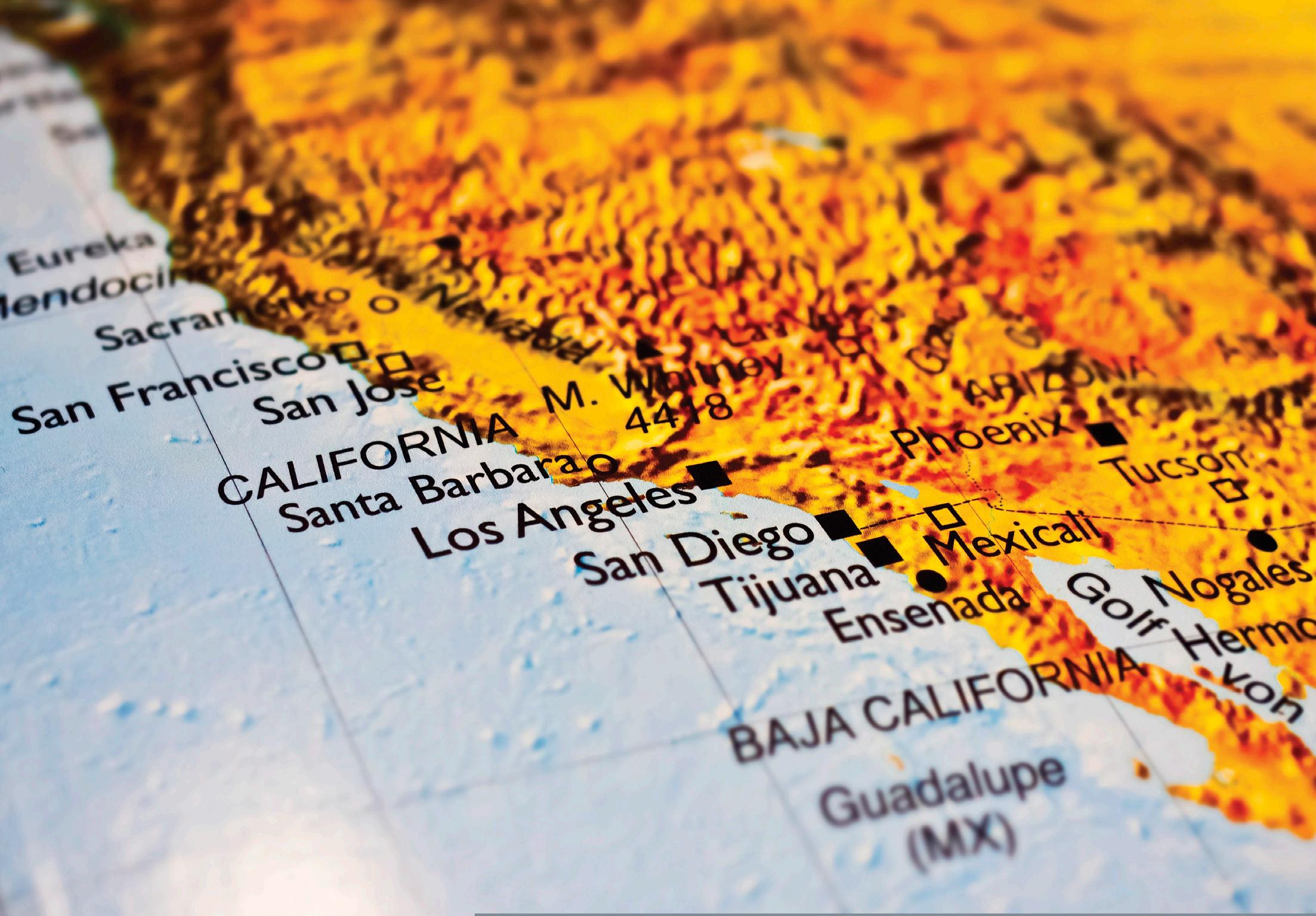
Apple Inc., the maker of iPhones and iMac computers, and led by CEO Tim Cook, posted a mind-boggling revenue of $394 billion last year. While it employs 164,000 people all over the world, Apple’s assets were worth $353 billion in 2022.
Let’s look at Mark Zuckerberg’s Meta, which owns Facebook, WhatsApp, and Instagram. It earned a revenue of $117 billion last year, when its combined assets were worth $186 billion. Meta Platforms employed over 86,000 people as of December last year before making a much-criticised decision to sack numerous workers.
Take Hewlett-Packard as another example of California’s corporate muscle power. HP Inc., one of the world’s leading laptop makers, is not a new kid in town, which is the case with many other American technology giants that were born only since the internet revolution started. HP has been around for 84 long years. Last year, it recorded a revenue of $63 billion, while its assets totalled $39 billion. The printer-and-computer company employs 58,000 people.
Streaming giant Netflix is another cog in the wheel of the Californian Empire. While many people aren’t aware that the film production titan has been in the business for 25 years, it became the rockstar of streaming movies only in recent years. In 2022, it posted a revenue of $32 billion, boasting assets worth $49 billion. Although it employs just under 13,000 people, Netflix is now a household name; it’s almost as popular as Google and Facebook.

Equally influential as a corporation is Intel Corporation, one of the world’s top semiconductor
and hardware producers. The 54-year-old company, which became a household name worldwide ever since the first PCs or desktop computers arrived, saw a revenue of $63 billion last year. Its assets are worth $182 billion, while it has a staff strength of 1,31,000.

To get a sense of the Californian tech companies’ firm grip on our lives, imagine a scenario where the world has to spend one full week without Big Tech platforms. For seven days, imagine there’s no Google search, no Gmail, no Facebook, no WhatsApp, no Netflix, no Google maps, no Wikipedia, no Apple products, no YouTube, no Visa, no Adobe Photoshop – if this sounds like a dystopian lockdown to you, that means you are indeed a devoted citizen of California Inc.
UNDERSTANDING THE DNA: ELON MUSK AND OTHERS
There’s a whole bunch of other powerful companies that help Corporate California dominate the world, as well as some celebrated tycoons, such as Elon
Delhi (NCR), May 1, 2023 | Year 1 • Issue 7 Chugalkhor Times 03
Pixabay Extraordinary Feats... ...Extraordinary People For making or breaking a record go to www.indiabookofrecords.in/apply B -121, 2nd oor, Green Field Colony, Faridabad-121010 (HR) Mob.: +91-9999436779, E-mail: ibr@indiabookofrecords.in Website: www.indiabookofrecords.in
Credit:
Credit: Pixabay
Credit:
Pixabay (Turn to Page 09)
Kashmir’s Lithium On Radar Of U.S. Lab That Helped Build Atom Bomb
California-based Lawrence Berkeley National Laboratory is among several players in the lithium and EV industries taking an interest in the development in India.
—A Special Report
May 1, 2023:
India’s tentative discovery of about 5.9 million tonnes of lithium deposits in its northern state of Jammu and Kashmir has made rich and geopolitically powerful nations sit up and take notice.
A handful of opportunistic western nations could be secretly eyeing whole new economic prospects, such as technology transfers and infrastructural support that India needs to exploit the new-found reserves of the costly non-ferrous metal.
The pursuit for lithium is increasingly becoming a new gold rush for the corporate world from east to west as batteries made from it are driving the world’s ongoing transition to EVs (electric vehicles).
Even as the J&K find is now being hotly discussed in energy sector boardrooms, it’s worth noting that the lithium deposits there are only in the “inferred” stage – which is basically a preliminary estimation made with a low level of confidence.
A key research body that has publicly taken notice of the Indian government’s announcement of its discovery is Lawrence Berkeley National Laboratory – a California-based subsidiary of the US government’s energy department
– that, incidentally, had played a major role in the development of the atom bomb and nuclear medicine.
In a paper titled “Pathways to Atmanirbhar Bharat” and woven around the theme of India’s aim to become energy independent by 2047, the Berkeley-based lab pointed out that the country has discovered much more lithium than it would need over the next 20 years in the Salal-Haimana area of J&K’s Reasi district.
According to the study, the discovery would speed up India’s transition to a more energyefficient economy fuelled by the extensive use of lithium-ion automotive battery-driven electric cars. The beauty of these batteries is that they can be recycled and used as new batteries, the American lab observed.
The research body also noted that India needed a $3 trillion investment in its energy infrastructure in the coming decades.
On the infrastructure front, Berkeley’s lab listed building of mines, processing plants, and transportation routes as the important areas. It also highlighted that most of India doesn’t have enough water, and called for the lessening of adverse effects of the lithium industry on the ecosystem,
and for New Delhi and the mining companies to work out efficient water management systems.
BERKELEY’S MOTIVE
On the surface, the lab’s paper can be treated as an academic report about the potential for India to transition from an importer of lithium-ion batteries to an exporter.

However, no discerning analyst can ignore the highly influential science think-tank’s association with monumental global developments and in shaping major US policies in the past. A logical question here is whether it is a well-calibrated identification of investment pathways for US policy-makers and profit-hungry MNCs to knock on New Delhi’s doors with infra and tech offerings.
It is worth noting here that the US lab, founded in 1931 by Ernest Lawrence who got the Nobel Prize for inventing the Cyclotron, has been adjudged by Nature Index as having the greatest research publication impact of any single government laboratory in the world in physical sciences and chemistry.
Even more interestingly, it’s worth recalling how lithium discovery and its mining have contributed to political and geopolitical unrest. On one
occasion, the mineral is said to have triggered a coup in a certain country, where the role of a European power has come under scrutiny.
CHILE, MEXICO TIGHTEN CONTROL
Chile, which has the world’s fourth highest lithium reserves at 11 million tonnes and is the globe’s second largest producer of the metal, saw lithium emerge as a common issue in every antigovernment protest in the Latin American nation in recent times. Last year, the capital Santiago witnessed massive street protests over bids to award mining rights to private players.
After a regime change, the new government rescinded the contracts and is now creating a bigger role for the state in lithium, which is also widely used in portable electronics, wind turbines, and solar batteries.
Walking down the same road after publicly declaring he cannot allow the country’s lithium resources to “be exploited by foreigners from Russia, China or the United States”, Mexican president Lopez Obrador in February handed over the responsibility for lithium reserves to the energy ministry after nationalising the mineral’s deposits in April 2022.
More than 15 years back, another Latin American nation, Bolivia, which is estimated to hold the world’s largest lithium reserves of 21 million tonnes and forms the “Lithium Triangle” with Chile and Argentina, had mustered up courage under its president Evo Morales to nationalise three metalprocessing plants owned by Swiss mining firm Glencore.
In February 2019, the Morales government opted for a Chinese consortium as its strategic partner on a new $2.3-billion lithium production project. Nine months later, Morales stepped down and was forced to flee after the nation’s army chief sought his resignation following weeks of protest over alleged irregularities in an election that Morales had won.
Days later, reputed South African online news
Chugalkhor Times Delhi (NCR), May 1, 2023 | Year 1 • Issue 7 04
Credit: Pixabay
(Turn to Page 09)
Bihar vs. Bangladesh The Illusion Of Prosperity
May 1, 2023:
Social media platforms are teeming with manufactured narratives claiming that India has become immensely prosperous, and that the road ahead is even brighter. The subliminal impression that these narratives leave is that such progress has occurred in just the last seven or eight years.
The India-rising narrative looks all the more dazzling, thanks to comparisons with our economically struggling neighbour, Pakistan, on the prosperity scale. The question is, should Pakistan alone be a developmental benchmark for India?
If comparing India with its neighbours is deemed a justifiable way to figure out how better we are doing economically, then it is also worth looking at how we compare against other neighbours, such as Bangladesh. Certainly, India will emerge as a winner on that front as well, isn’t it? But are we really sure?
While referring to the growth of our overall GDP (Gross Domestic Product), we often tend to ignore the fact that it is accompanied with a growth in population. Per capita GDP is therefore a better and more practical way to gauge prosperity. Let’s take a look at what the figures of the World Bank say.
A lot of Indians will be surprised to know that Bangladesh has overtaken us as far as per capita GDP is concerned. It also emerges that seven years ago, Bangladesh’s per capita GDP was just twothird of that of India. We all know that Bangladesh is a densely populated nation, with about 1,250 people residing per square kilometre. Its mineral resources are limited compared to its population, and natural disasters routinely take a toll on the country.
While India has undoubtedly made some progress, has it really been all that laudable? To
make sense of that, we need to consider the following observations.
India’s GDP growth on a per capita basis is of the order of 4% per annum for the period from 2014-2020. This is offset by high inflation – the WPI (wholesale price index) is as high as 12%. Even if we pride ourselves in containing the CPI (consumer price index) at 4.48%, it means that Indians are overall worse off now compared to 2014. The situation reflects the sordid fact that large sections of Indian society, such as the elderly population
BIHAR AND BANGL ADESH: A COMPARISON
and the farming community haven’t experienced economic progress.
The figures for Bihar are collected from multiple Indian sources. They range between a realistic depiction, as shown in BIHAR I, and a very optimistic depiction, as shown in BIHAR II.
In 2004, India’s per capita GDP, as reported by the World Bank, was $897. Over a decade, it grew by 75%. That corresponds to a growth rate of about 5.9%. Inflation rates were significantly lower.
INDIA AND BANGL ADESH: A COMPARISON
BIHAR AND BANGL ADESH: A COMPARISON
The figures for Bihar are collected from multiple Indian sources. They range between a realistic depiction, as shown in BIHAR I, and a very optimistic depiction, as shown in BIHAR II.
INDIA AND BANGL ADESH: A COMPARISON
In several states, the per capita GDP has been much better than the national average, which remained low because of the lack of performance elsewhere.
This is best illustrated by a comparison between the country of Bangladesh and the state of Bihar – if seen in isolation as a case study. More than two-third the size of Bangladesh and with a high population density of over 1,100 people per square kilometre, Bihar is practically comparable to our neighbouring nation. It is also worth noting that Bihar has bountiful natural resources.
So, how do the two compare in terms of prosperity? Let’s have a close look.
Quibble as you like, it is an incredible fact that the per capita GDP of Bihar is well below even 50% of that of Bangladesh.
As much as 42% of the people of Bangladesh belong to agricultural communities, and 14% of the country’s GDP is generated from there. Bangladesh has recently achieved self-sufficiency in grain – it produces rice – and recognises the role of agriculture in providing jobs and food security – a policy that is quite unlike Bihar. There is a reason why Bangladesh holds the edge on this front. It recognises the importance of market-yard systems similar to the APMCs (agricultural produce market committees) of Punjab, Haryana, western Uttar Pradesh, and Maharashtra, and has moved towards creating such structures. In stark contrast to Bangladesh’s initiative, Bihar abolished its APMCs back in 2006.
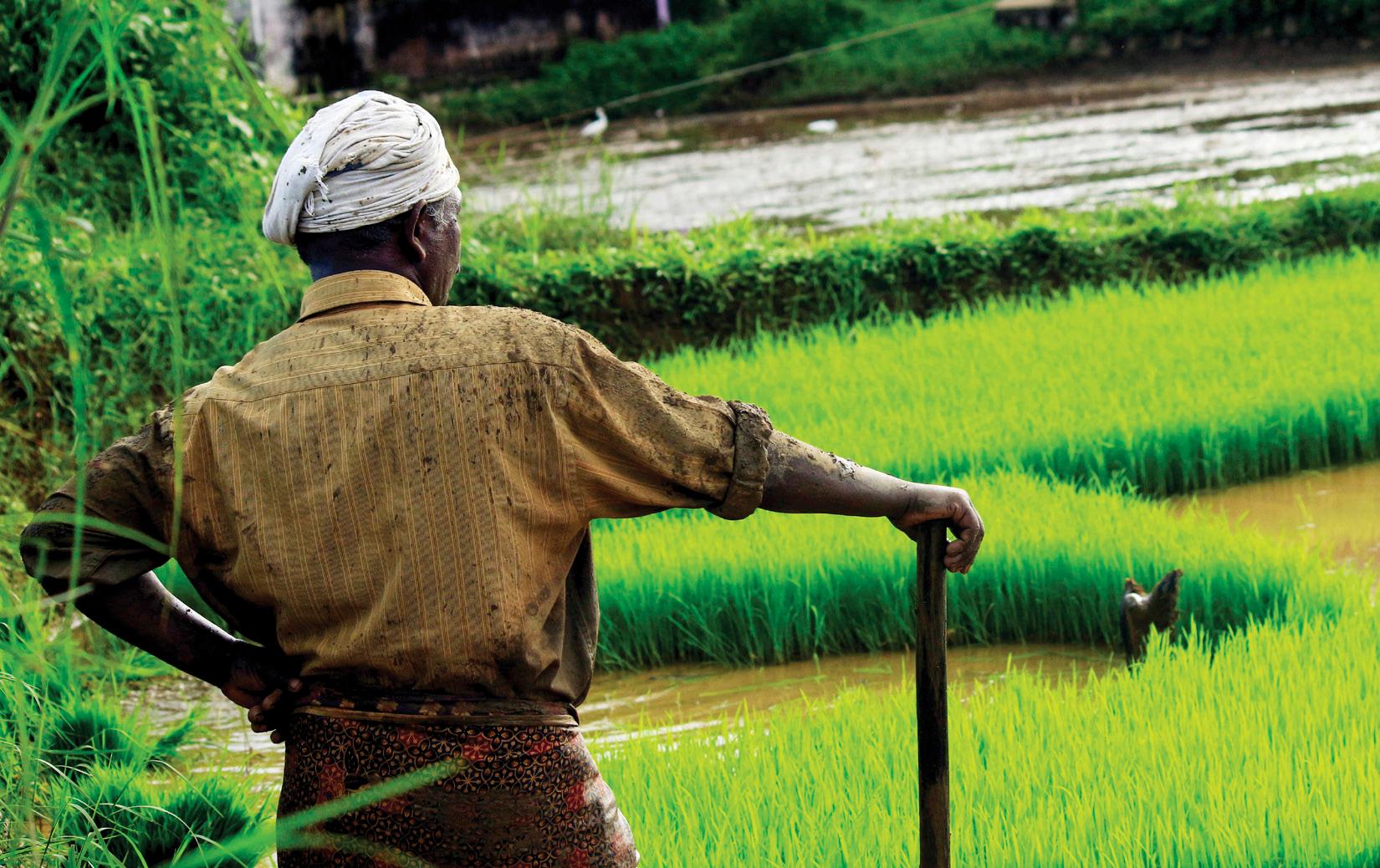
It has to be recognised that the farming community consists of many segments, and cannot be lumped as a whole when making policy. In Bihar, while orchardists, such as mango growers, have done quite well, the fate of grain farmers there has been abysmal, to say the least.
Rice cultivators realise barely Rs 1,000 per quintal of paddy, which is about half of the MSP (minimum support price) that farmers in Indian states that operate APMCs get. As a result, most grain farmers in Bihar are left with no option but to resort to becoming migrant labourers across the country. And those grain farmers in Bihar with large landholdings transport their produce to mandis in Haryana.
Despite much-touted direct corporate-farmer deals, conglomerates such as HUL and ITC eventually don’t buy substantial quantities of grain from Bihar’s farmers. They prefer buying from the organised mandis of Punjab and Haryana, ignoring the relatively chaotic marketplace in Bihar.
It is interesting to note that barely 75km from Kishenganj in Bihar lies India’s border with Bangladesh. Despite having abundant resources, Bihar continues to limp along, while in comparison, Bangladesh is taking prominent strides towards agriculture-driven prosperity.
At the end of the day, performance results from proper policy and its honest implementation, not mere electoral rhetoric. For a state such as Bihar, there are clear lessons to be learnt from what Bangladesh has been trying to do.
Delhi (NCR), May 1, 2023 | Year 1 • Issue 7 Chugalkhor Times 05
Credit: Pixabay
We often tend to believe that India is always doing economically better than its neighbours. But is it really true? This rare comparison between the Indian state of Bihar and the neighbouring country of Bangladesh shows some interesting results.
—Sanjay Mukerji
GDP
Pop (2020) GDP per capita GDP (2014) Pop (2014) GDP per capita Growth in GDP 2014-2020 US$ billion Billion US$ US$ billion Billion US$ 324 0.165 1964 173 0.155 1116 87% 2623 1.38 1901 2039 1.30 1568 29% BANGLADESH INDIA GDP (2020) Pop (2020) GDP per capita US$ billion Billion US$ 324 0.165 1964 92 0.124 742 102 0.115 887
(2020)
II
BANGLADESH BIHAR I BIHAR
Pop
GDP per capita GDP
Pop (2014) GDP per capita Growth in GDP 2014-2020 US$ billion Billion US$ US$ billion Billion US$ 324 0.165 1964 173 0.155 1116 87% 2623 1.38 1901 2039 1.30 1568 29% BANGLADESH INDIA GDP (2020) Pop (2020) GDP per capita US$ billion Billion US$ 324 0.165 1964 92 0.124 742 102 0.115 887
GDP (2020)
(2020)
(2014)
BANGLADESH BIHAR I BIHAR II
Is There A Hidden Agenda Behind India’s Water Crisis?
rainwater harvesting systems also played a major role in exacerbating the crisis. While TV news channels ran reports all day about the causative factors, they didn’t venture another step deeper into precisely what’s behind them.
SAME STORY IN DELHI
The lapses in Chennai were repeated in New Delhi, India’s capital city, which has also witnessed a population explosion with people from financially broken parts of the country descending for jobs, businesses, and better living. In a research article published in the International Journal of Urban Sustainable Development, Arindam Biswas and Druti Gangwar studied the impact of excess urbanisation on water supply.
“The rapid urbanisation of Delhi is leading to population-resource imbalance due to the limited surface water allocation for domestic consumption, for example, drinking water supply. Groundwater, the other source of water, is being widely extracted to meet industrial and agricultural demands.
May 1, 2023:
Rapid, unplanned, and uncontrolled urbanisation gift-wrapped as ‘development’ and ‘progress’ in thickly populated cities that are bursting at the seams is sending India hurtling towards a deepening water scarcity crisis.
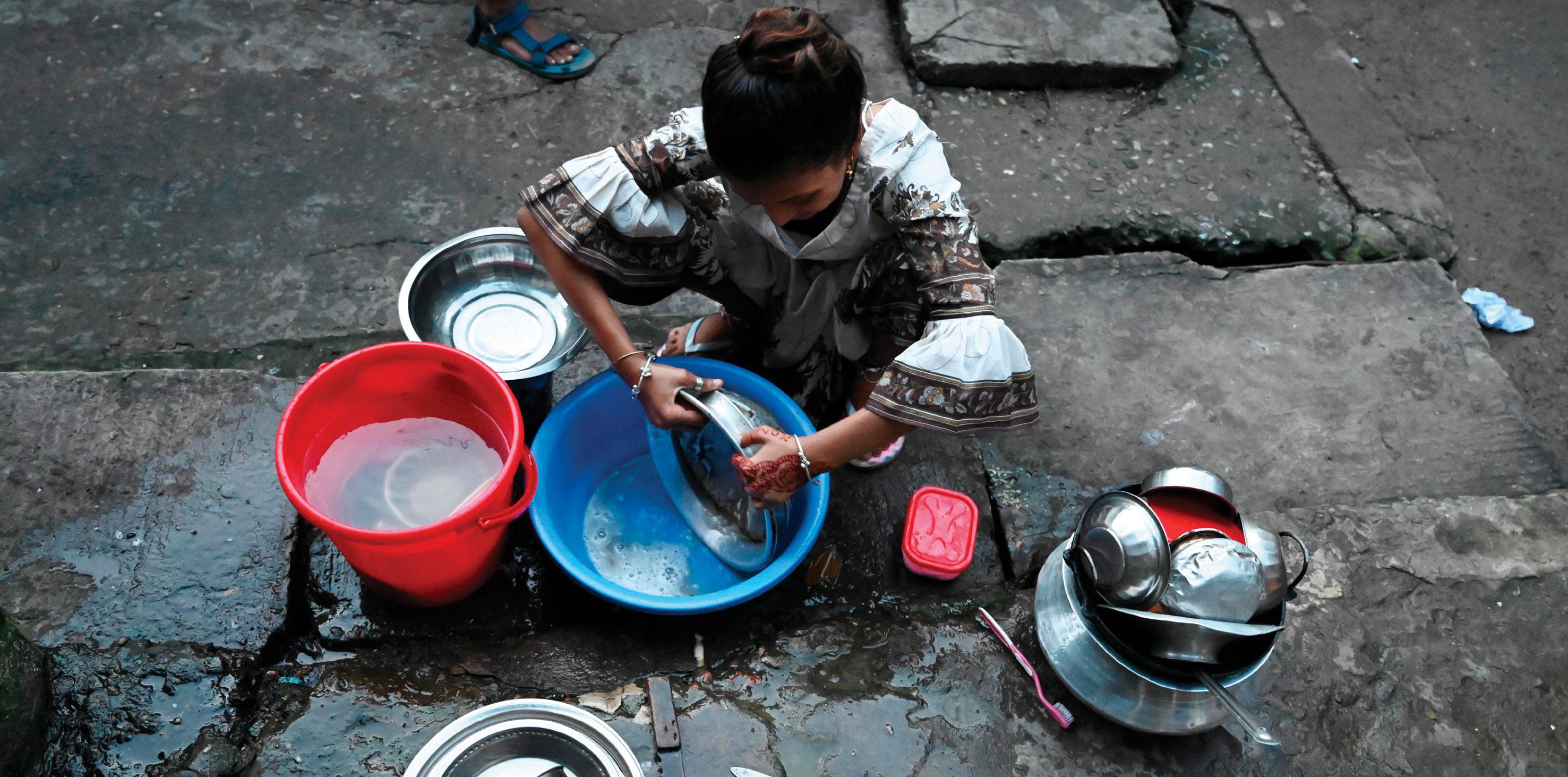
Widespread construction work taking place across India’s cities and townships at the behest of greedy real estate corporations, both indigenous and overseas, has disturbed the hyperlocal climate and damaged ecosystems.
A disaster such as Joshimath – a northern Indian Himalayan town that is alarmingly sinking into the ground – is only one such fallout. The clock seems to be ticking for another famed Himalayan city, Shimla, as Empire Diaries showed in a recent investigative report.
A similar tragedy could befall many other cities and towns in the coming decades if those in power continue to ignore repeated warnings from activists and scientists about the vital sources
of freshwater drying up because of overuse and anthropogenic changes to the climate.

WHEN CHENNAI RAN DRY
The horrific experiences of the residents of India’s sixth most populous city and fourth most populous urban agglomeration, Chennai, the capital of the country’s southern state of Tamil Nadu, is a case in point. In the peak of summer in June 2019, all four major reservoirs or lakes – Poondi, Cholavaram, Redhills, and Chembarambakkam –supplying water to the expanding metropolis and its adjoining areas, almost went dry, sparking a massive crisis.
Taps ran dry, schools were shut down, countless restaurants and hotels ran out of business due to lack of basic water supply, and the police had to throw security rings around water resources to prevent law and order breaches. The state government was forced to truck in 10 million litres of water a day to feed the giant, thirsty city.
Ironically, Chennai was drowned by massive
floods only in 2015, and it gets on an average 1,400mm of rainfall annually – more than double of what London receives.
The poor were the worst hit by the water crisis as the waiting period for the Chennai Metropolitan Water Supply & Sewerage Board’s (CMWSSB) tankers stretched to 15-25 days due to skyrocketing demand, even as private tankers fleeced the residents desperate for water. Those residing in slums or lower-income societies saw almost half of their monthly income drained out in buying water.
While it is true that ahead of the 2019 crisis, Chennai received two years of deficient monsoon rains, experts said the calamity resulted from long-term indiscriminate groundwater extraction, mass-scale encroachment, and rampant illegal constructions – all resulting from uncontrolled migration from broken villages to the big city in hopes of a better life.
Apart from these causative factors, poor implementation and lack of maintenance of

“Some percentage of the groundwater is also used to meet the domestic or municipal water demand. The total municipal water requirement for municipal and drinking water demand of the National Capital Territory (NCT) of Delhi is nearly 913 million gallons per day (MGD). The Delhi Jal Board (DJB) supplies 835 MGD (including around 100 MGD from groundwater). The net deficit in the drinking water supply is approximately 88 MGD,” said the 2020 paper titled “Studying the water crisis in Delhi due to rapid urbanisation and land use transformation”.
“The planning department of the government of NCT Delhi aims to meet this drinking water deficit by additional groundwater extraction, although this initiative may lead to overexploitation of groundwater,” the authors noted.
In 2015, a study by the Central Ground Water Board (CGWB) underlined the depleting groundwater situation in the northwest, southwest, and southern districts of Delhi.
Chugalkhor Times Delhi (NCR), May 1, 2023 | Year 1 • Issue 7 06
(Turn to Page 09)
There’s a lot of discussion and debate in the mainstream media about urban water supply crisis in India. But there’s no investigation into the possible corporate interests behind the water scarcity.
—A Special Report
Take The Mask Off, Let Science Breathe Easy
Symbolism
plays a major role in human perception. During the current pandemic, face masks became the symbolic shield in the battle against the novel coronavirus, while waiting for the more sophisticated artillery, the vaccine.
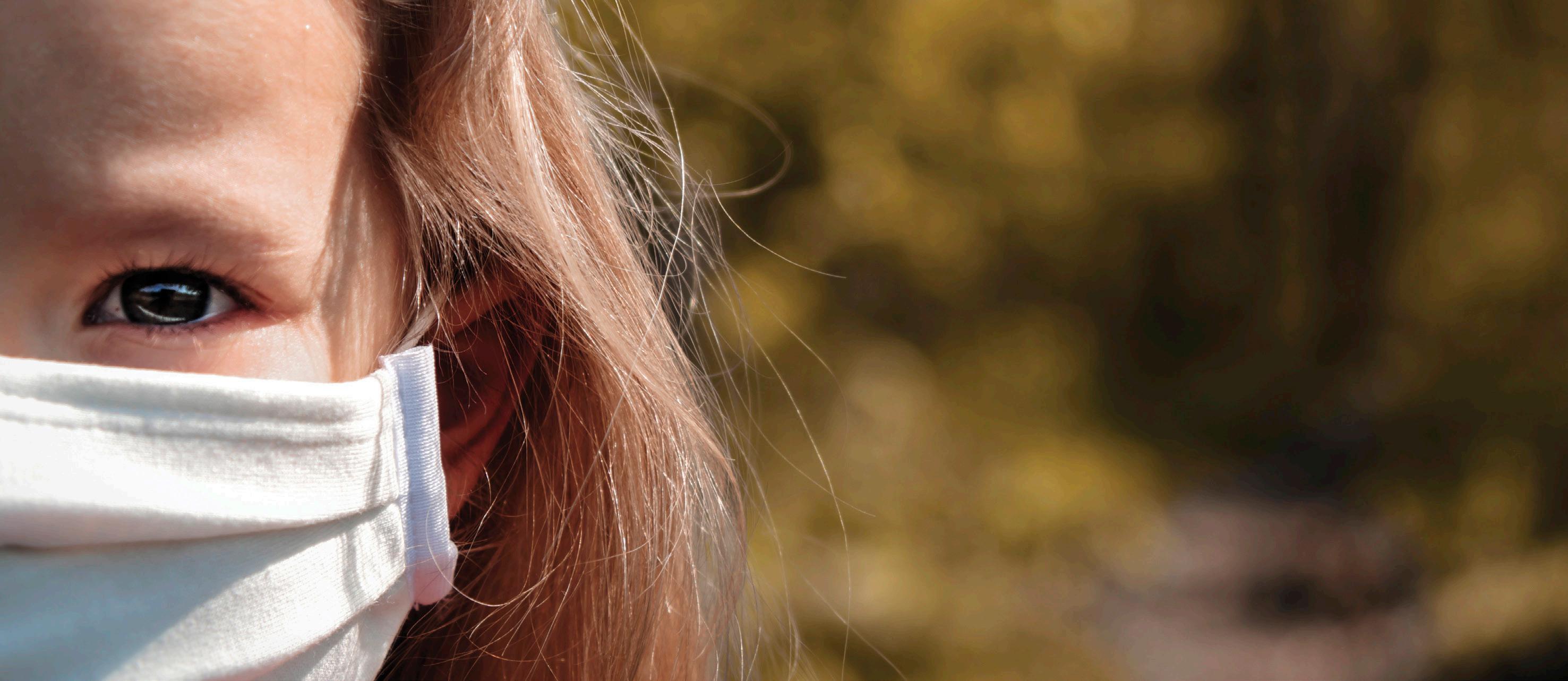

While scientists, slowly, unglamorously, and painstakingly reviewed the evidence, politics and propaganda hijacked the issue. Market forces, too, butted in with designer masks. Mask use or non-use became an issue for shaming, blaming, and stigmatising people. Soon to follow were mask mandates and fines.

Science was simply confined to the backstage. Mass mask use propaganda influenced people in almost every walk of life, making them substitute evidence with emotion. To date, there is no robust scientific evidence that clearly shows masks stop the transmission of respiratory viruses.
Wherever and whenever trends of Covid-19 cases and deaths went down after mask mandates, they did so due to natural phenomenon, and not due to any mandates.

The natural course of respiratory outbreaks has three phases: rise, peak, and fall. In the first phase, due to the high numbers of susceptible people in the population, cases rise rapidly till very few are left uninfected, when the peak is reached, after which there is the fall. Mask mandates are enforced most strongly during the peak. The subsequent fall in cases, which is a natural phenomenon, is often wrongly attributed to the mask mandate.
Observational studies, which are often quoted in support of mask mandates, have this limitation. Besides, without randomly allocated control and intervention groups, observational studies have other limitations, which can give spurious associations.
For example, the affluent may wear masks more often compared to the less privileged. The former
will also have better housing, better access to hand-washing, and less crowded workplaces. All these will make them less likely to catch respiratory infections compared to the less privileged, and this observation will wrongly attribute the low transmission to the wearing of masks.
CONTROLLED TRIALS
The best evidence comes from randomised controlled trials in which both the controls (unmasked group) and the experimental group (those who wear masks) are randomly allocated

and followed forward in time. There have been two such studies during the course of the pandemic.
The first one was a Danish mask study. The results did not establish that masks were effective in reducing transmission. As the findings went
College, Malaysia

Delhi (NCR), May 1, 2023 | Year 1 • Issue 7 Chugalkhor Times 07 न लगाना न पीना न खाना The box contains: • 2 Seconds Oil bottle • Cer tificate of Commitment relief in 2 steps Step 1 Open the cap Step 2 Sniff the oil Headache A D r . B R C P r o d u c t To b u y , g o t o w w w.biswaroop.com/shop ‘दश का सरदद कर र’ Mini book • ‘R N H
Months Online Certication
on from Course Fee: INR 21,000/- (including GST + Courier) Mode of Training: Online / viva (oral examination) through a video call Content: Ÿ Diagnosis of Lifestyle Illnesses Ÿ Diagnosis of Infectious Diseases Ÿ Food–Medicine Interaction Ÿ Mechanism of Medicine in Body Ÿ Mechanism of Food in Body Ÿ When the Food is Medicine Ÿ When Medicine is Poison Ÿ Common Kitchen Herbs and their Medicinal Usages Ÿ Timeline of Recovery of Common Illnesses Ÿ Food Calculation for Overall Nutrition Plants V/S Animal Food Take-Home Material : Hospital in a Box Game of Life Chart Snake Ladder Nutrition Game Reference Book Over view: From common cold to Cancer, from headache to heart attack, you can be your own healer. This training comes with a unique tool kit packed with 28 ingredients, the right combination of it can work as a medicine for more than 60 kinds of common illnesses. This training will empower you with skills to heal and make you realize that your home is the best place to reclaim your health.
3 Months To register go to www.biswaroop.com/mn
University
C ALL US: +91-9312286540 MAIL US: biswaroop@biswaroop.com (Turn to Page 08)
3
Advance Nutrition Therapy
Duration:
Lincoln
Mask use by the general public, particularly during the summer months, is hazardous and should be discouraged. It’s high time we realise this. Let’s hope better sense prevails.
COLUMN/ Dr. Amitav Banerjee
Credit: Pixabay
against the ‘consensus’, the authors had a difficult time to find a journal that would publish their study. It was ultimately published in a journal with a caveat – the authors had to conclude that the findings were inconclusive instead of negative.
Another large-scale randomised community trial, carried out in Bangladesh, failed to establish any advantage of cloth masks in preventing transmission of the virus and showed only a very modest benefit of surgical masks. However, the study came under serious criticism with allegations of concealing important data by the investigators and underreporting any adverse effects of masks.
The last resort in resolving medical uncertainties is the Cochrane Library. It is a collection of databases containing high-quality, independent evidence aimed at helping with informed healthcare decision-making. The latest systematic review and meta-analysis, that is, the pooling the results of high-quality studies to generate the best available evidence by the Cochrane Library, concluded that the pooled results of randomised controlled trials (the gold standard in evidencebased medicine), did not show a clear reduction in respiratory viral infection with the use of medical or surgical masks. There was also no advantage with N95 or P2 respirators in routine healthcare. The balance of evidence suggests that masks do not help. But the more important question is
whether they can cause harm. The research on the potential harms of face masks is emerging.
A detailed systematic review with meta-analysis raises many concerns. This paper published earlier this month brings out ample evidence of multiple harms in prolonged use of face masks, with worse outcomes for N95 masks.
The physiological and metabolic changes as a consequence of face masks can have long-term clinical consequences, especially for vulnerable groups such as children, pregnant women, the elderly, and ill people. Besides progressive lack of oxygen and build-up of CO2, there can be other changes, such as oxidative stress, constriction of blood vessels, inflammatory response, suppression of immunity, and changes at the organ, cellular, and microbiome levels and precipitation of MIES (mask-induced exhaustion syndrome).
The authors of the paper also suggest that MIES symptoms might have been misinterpreted as long-Covid symptoms.
MUCORMYCOSIS CASES
In the Indian context, there are more serious concerns associated with the use of face masks. A study at AIIMS (All India Institute of Medical Sciences) New Delhi reported high levels of fungal contamination in face masks. During the second wave in India, which occurred in the summer of 2021, a sharp increase in Covid-associated mucormycosis, or black fungus, challenged India’s healthcare system.
By the end of June 2021, India reported over 40,000 cases of mucormycosis. While mucormycosis was attributed to misuse of steroids and pre-existing diabetes, we cannot rule out the role of soiled face masks contributing to the growth of fungus and other pathogens.
Indian summers are hot and humid, and a face mask can get soiled within a couple of hours. This can provide ideal conditions for growth of fungus. The concern regarding the role of face masks in mucormycosis has also been raised by a paper in the Journal of Global Infectious Diseases.

Against the above background, of weakening evidence of benefits of face masks and increasing concerns of serious adverse effects including black fungus that maimed and killed many during the second wave of Covid-19, we can conclude that the recommendation of masks should be reconsidered. More so, when there is evidence that the Omicron variant of the virus and its sub-lineages are able to spread more swiftly, overcoming all physical and distancing barriers.
Mask use by the general public, particularly in the summer months, is hazardous and should be discouraged. The issue should be addressed in a strictly scientific manner without any political influence, and from a humanitarian and ethical point of view. The balance of evidence points to more potential harms than benefits.
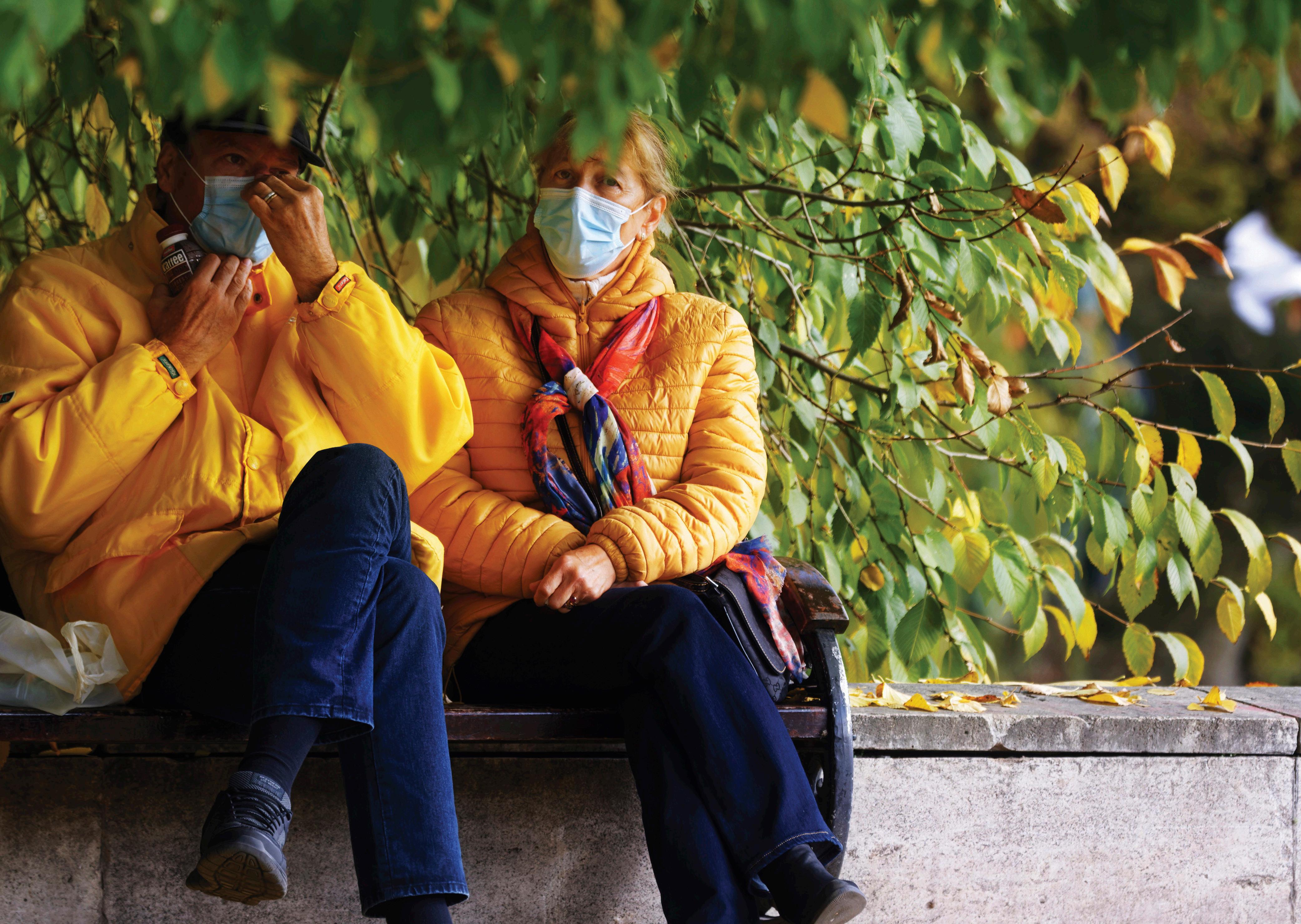
Science, which has been suppressed for so long
during the pandemic, should be revived, failing which, more people may die.
(Dr. Amitav Banerjee was a field epidemiologist for over two decades in the Indian Army. He led the mobile epidemic investigation team at the Armed Forces Medical College in Pune, India, from 20002004. During this period, he investigated a number of outbreaks in the country. He is presently a professor in a medical college in Pune.)
Chugalkhor Times Delhi (NCR), May 1, 2023 | Year 1 • Issue 7 08
(from page 07)
Credit: Pixabay
Musk. He’s the CEO of Twitter and SpaceX, both California-headquartered companies.
Visa, PayPal, eBay dominate the global digital transactions market. Chevron Corporation is a major player in the global oil and gas business and, therefore, a key stakeholder in the US-run petrodollar system. Gap, Levi’s, and Forever 21 are textile and fashion brands that are literally worshipped by urban populations across continents. Wikipedia is the most visited online encyclopaedia for everything under the sun.
OpenAI, the maker of ChatGPT, is the poster boy of the Artificial Intelligence revolution. Uber is a widely trusted cab-hailing app. Fast food chain Taco Bell makes a huge amount of money in shopping malls around the world. And then, of course, there are several other IT industry stalwarts that make California Inc. a major global force, such as Qualcomm, Cisco, Logitech, McAfee, Seagate, and Nvidia.
Returning to the topic of what makes mainstream narratives decidedly stay miles away from telling the world how California Inc. dictates our lives, one can only speculate why it is so.
Perhaps the western corporate world, which usually scripts the narratives of the world order through its clout over the popular press, wants us to continue believing in the ages-old notion that only governments run societies – and that businesses are around only to give us goods, services, and materialistic pleasure. It’s well known that influential corporations and industries influence popular narratives in the media.
However, there’s a paradox here. Corporate
SPOTLIGHT ON JAIPUR
Such water deficit scenarios are not limited to Chennai and New Delhi. Cities and towns across the country suffer from acute water shortages due to lack of focus on tackling expanding populations and increasing urbanisation.
In a 2018 research paper carried by the online journal Nature Sustainability, scientist Robert Mcdonald and his colleagues projected that by 2050, Jaipur in Rajasthan would become the second most surface-water deficit city in the world after Los Angeles. Chennai is estimated to take the 20th spot.
Two years later, the WWF (World Wide Fund for Nature) identified around 30 Indian cities, including Jaipur, Indore, Amritsar, Pune, Srinagar, Kolkata, Bengaluru, Mumbai, Kozhikode, and Visakhapatnam, which would face increasing water supply risks over the next few decades.
It is high time the authorities initiate emergency measures. Time is running out. Research undertaken by the Centre for Science and Environment has shown that groundwater forms the source of 48% of India’s urban water supply, and in seven of the nation’s 10 most populous cities, groundwater levels have gone down significantly over the past two decades.
A paucity of water supply networks also poses a problem for India’s urban dwellers. While over 34% of the country’s population lives in the cities, 31% of urban households, mostly colonies and slums not recognised by government authorities, lack access to piped water or public tap water.
California’s phenomenal rise to power in recent decades reminds us of the dark days of the British East India Company, which invaded and ruled the Indian subcontinent before it was replaced by the equally regressive British monarchy as a coloniser.
The idea here is not to demean the Californiaheadquartered businesses. This isn’t a rant against corporate success. Rather, the idea here is to compare two different points on civilisation’s long timescale – now (the time of California Inc.) and then (the time of the British East India Company).
CALIFORNIAN EMPIRE VS. EAST INDIA COMPANY
For Silicon Valley fans, Big Tech’s obsessive customers, and Hollywood movie buffs, it is worth looking back at what happened between 1600 and 1874.
In 1608, eight years after the British East India Company was born, it was welcomed by the bewildered population of Surat in Gujarat. Surat’s unsuspecting coastal people didn’t realise at that time that the seemingly naïve trading company from Europe would someday tower above them as an octopus-like monopoly, sucking the entire Indian subcontinent dry of its resources.
And from this same East India Company story, there’s an important lesson for today’s Corporate California as well. As the saying goes, all good things don’t last for good, the East India Company was eventually bulldozed by the British monarchy in 1858 and made to wind up in 1874.
The Californian Empire and its fanatical citizens (read: customers) will find out in the time to come if history will repeat itself.
The majority of Indian cities, thus, cannot meet the per capita water supply limit set by the Central Public Health and Environmental Engineering Organisation, which is 135 litres per day.
UN’s DOOMSDAY FORECAST
In a recent and more damning report, the United Nations has made a dark prediction about India’s worsening water crisis. According to the UN, India will become the world’s worst-affected country in terms of water scarcity by around 2050. “The United Nations World Water Development Report 2023: Partnerships and Cooperation for water” was published last month on the eve of a major UN summit in New York on water scarcity and water crisis.
The report said between 2.2 and 3.2 billion people lived under water stress for at least one month in 2010, corresponding to 32% and 46% of the world’s population at the time. Around 80% of people living in water stress lived in Asia – in particular, in northeast China, India, and Pakistan.
The global urban population facing water scarcity is projected to increase from 933 million (one-third of the global urban population) in 2016 to 1.7-2.4 billion people (one-third to nearly half of the global urban population) in 2050, with India projected to be the most severely affected.
According to Richard Connor, the report’s lead author, the impact of the “world water crisis” will be a “matter of scenarios”.
“If nothing is done, it will be a business-as-usual scenario – it will keep on being between 40% and 50% of the population of the world that does not have access to sanitation and roughly 20-25%
(from page 04)
publication and weekly newspaper Daily Maverick came up with a report alleging that “the UK supported the coup [against Morales] in Bolivia to gain access to its white gold”.
The media outlet accused the British embassy in the city of La Paz of bringing a cybersecurity company with close links to the CIA (US Central Intelligence Agency) to Bolivia eight months before the military takeover and providing data for an international report that was used to justify the coup.
It also claimed that Britain’s foreign office appeared to have paid an Oxford-based company to optimise the “exploitation” of Bolivia’s lithium deposits the month after Morales fled the country, while the UK embassy acted as a “strategic partner” to the coup regime and organised an international mining event.
FOREIGN COLLABORATIONS
The Indian government has already announced it would invite bids for the auction of the lithium reserves in J&K early in the June-September quarter as part of its move to reach the next two stages – G2 (general exploration) and G1 (detailed exploration) – before carrying out a feasibility study in exploiting the lithium resources.
Meanwhile, India had rolled out the red carpet for foreign collaborations in lithium mining much before the J&K discovery. The Khanij Bidesh India Ltd (KABIL), a joint venture of three CPSEs under the ministry of mines, signed a non-binding MoU with three state-owned organisations from Argentina for sharing information about prospective mineral acreages of lithium.
of the world will not have access to safe water supply,” Connor wrote in the report. With the global population increasing every day, “in absolute numbers, there’ll be more and more people that don’t have access to these services,” he wrote.
REAL REASON: CORPORATE TAKEOVER OF WATER?
India’s fast-escalating water supply crisis comes as a paradox in a resource-rich country whose large swathes soak in abundant quantities of rain during the monsoons. For India to be labelled the most water-scarce country in the coming years reminds us of Samuel Taylor Coleridge’s epic line from his poem, The Rime of the Ancient Mariner: Water, water everywhere, nor any drop to drink.
In a world where empires and their administrations are obsessed with agendadriven issues such as coronavirus vaccines and climate change, a chilling piece of stat throws the searchlight on how lopsided our priorities are. Diarrhoea, a silent killer that doesn’t make it to primetime headlines, claims about 2,200 young lives every day — much more than AIDS, malaria, and measles combined — and it is generally caused by a lack of access to clean water and sanitation services.
It is amply clear that water scarcity is not being prioritised above flashier and more spectacular issues plaguing the human race. What could be the reason behind it? Is it because fixing water woes would throw a spanner in the wheels
A G2G MoU has also been inked between the central government and its Australian counterpart for cooperation in the field of mining and processing of “critical and strategic minerals” such as lithium.
According to the coal ministry, KABIL has signed a detailed MoU with CMFO (Critical Minerals Facilitation Office), DISER (Department of Industry, Science and Resources, Australia for identifying lithium and cobalt assets for joint investment decisions.
Some years back, Andrew Barron, a professor of low carbon energy and the environment at Swansea University, UK, had visualised two extreme scenarios in the context of lithium exploitation. According to Barron, “The lithiumproducing countries could band together to form their own version of OPEC, perhaps deciding to control the prices of the metal by rationing supply. Alternatively, we could see wars being fought over lithium resources and supply lines, as they’ve been fought over oil for decades.”
While the present global situation does not reflect Barron’s premises yet, the world is already witnessing a scramble between runaway leader China and distant challenger US and its allies over the sourcing of lithium and controlling the metal’s exploitation in the backdrop of the EV revolution.
India could become a major player if the initial estimates of the J&K reserves hold true in the long run. It will then be interesting to see if India is drawn, willingly or unwillingly, into the race, or if it manages to chart out an independent path to reach its climate goals of mission 2030, 2047, and 2070.
of profit-focused corporatisation of modern civilisation?
Is it something far more sinister than the mere mismanagement of water supply? It is well-known that growing water supply problems consistently dovetail rapid and expanding urbanisation. Do empires that are corralling an increasing number of people into templatised, monoculture cities are plotting to someday cash in on this deepening water scarcity and eventually commodify the essential compound?
Modern history has shown that resource-based business models are always preceded by a scarcity of those resources. The commodification of seeds, urban land, minerals, and underground fossil fuels came right when these vital resources were ‘seen’ as becoming increasingly scarce. Much in the same way, will the intensifying water scarcity in India be followed by an industry-level ‘productification’ of natural water?
Well, it’s not that hard to speculate, is it? We already have a glaring example to learn from. We have foreign companies pumping out water from underneath Indian soil, selling it back to Indians as glorified bottled water, and then walking away with the profits!
Is the urban water crisis a sign that the ubiquitous natural resource, which is as of now packaged as a profit-making product only in bits and pieces, could someday become completely commodified?
Delhi (NCR), May 1, 2023 | Year 1 • Issue 7 Chugalkhor Times 09
(from page 03) (from page 06)
Support our brand of truthful journalism. Send your contribution to: Empire Diaries, HDFC Bank Current AC: 50200078483948, IFSC Code: HDFC0000028, Founding Editors: Ratna and Nadim Siraj
Time To Set AssangeJulian Free
of his counterfeit in the media, but has told people the truth about how the world is run.’
Ihave known Julian Assange since I first interviewed him in London in 2010. I immediately liked his dry, dark sense of humour, often dispensed with an infectious giggle. He is a proud outsider: sharp and thoughtful. We have become friends, and I have sat in many courtrooms listening to the tribunes of the state try to silence him and his moral revolution in journalism.
My own high point was when a judge in the Royal Courts of Justice leaned across his bench and growled at me: ‘You are just a peripatetic Australian like Assange.’ My name was on a list of volunteers to stand bail for Julian, and this judge spotted me as the one who had reported his role in the notorious case of the expelled Chagos Islanders. Unintentionally, he delivered me a compliment.
I saw Julian in Belmarsh not long ago. We talked about books and the oppressive idiocy of the prison: the happy-clappy slogans on the walls, the
petty punishments; they still won’t let him use the gym. He must exercise alone in a cage-like area where there is sign that warns about keeping off the grass. But there is no grass. We laughed; for a brief moment, some things didn’t seem too bad.
The laughter is a shield, of course. When the prison guards began to jangle their keys, as they like to do, indicating our time was up, he fell quiet. As I left the room he held his fist high and clenched as he always does. He is the embodiment of courage.
Those who are the antithesis of Julian: in whom courage is unheard of, along with principle and honour, stand between him and freedom. I am not referring to the Mafia regime in Washington whose pursuit of a good man is meant as a warning to us all, but rather to those who still claim to run a just democracy in Australia.
Anthony Albanese was mouthing his favourite
platitude, ‘enough is enough’ long before he was elected prime minister of Australia last year. He gave many of us precious hope, including Julian’s family. As prime minister he added weasel words about ‘not sympathising’ with what Julian had done. Apparently we had to understand his need to cover his appropriated posteria in case Washington called him to order.
We knew it would take exceptional political if not moral courage for Albanese to stand up in the Australian Parliament — the same Parliament that will disport itself before Joe Biden in May — and say:
‘As prime minister, it is my government’s responsibility to bring home an Australian citizen who is clearly the victim of a great, vindictive injustice: a man who has been persecuted for the kind of journalism that is a true public service, a man who has not lied, or deceived — like so many
‘I call on the United States,’ a courageous and moral Prime Minister Albanese might say, ‘to withdraw its extradition application: to end the malign farce that has stained Britain’s once admired courts of justice and to allow the release of Julian Assange unconditionally to his family. For Julian to remain in his cell at Belmarsh is an act of torture, as the United Nations Raporteur has called it. It is how a dictatorship behaves.’

THE HARSH REALITY
Alas, my daydream about Australia doing right by Julian has reached its limits. The teasing of hope by Albanese is now close to a betrayal for which the historical memory will not forget him, and many will not forgive him. What, then, is he waiting for?
Remember that Julian was granted political asylum by the Ecuadorean government in 2013 largely because his own government had abandoned him. That alone ought to bring shame on those responsible: namely the Labor government of Julia Gillard.
So eager was Gillard to collude with the Americans in shutting down WikiLeaks for its truth telling that she wanted the Australian Federal Police to arrest Assange and take away his passport for what she called his ‘illegal’ publishing.
Chugalkhor Times Delhi (NCR), May 1, 2023 | Year 1 • Issue 7 10
The fight to get Julian Assange released from prison is not about the survival of a free press. There is no longer a free press. The paramount issue is justice and our most precious human right: to be free.
COLUMN/ John Pilger
Credit: Pixabay
The AFP pointed out that they had no such powers: Assange had committed no crime.
It is as if you can measure Australia’s extraordinary surrender of sovereignty by the way it treats Julian Assange. Gillard’s pantomime grovelling to both houses of the US Congress is cringing theatre on YouTube. Australia, she repeated, was America’s ‘great mate’. Or was it ‘little mate’?
Her foreign minister was Bob Carr, another Labor machine politician whom WikiLeaks exposed as an American informant, one of Washington’s useful boys in Australia. In his published diaries, Carr boasted knowing Henry Kissinger; indeed the Great Warmonger invited the foreign minister to go camping in the California woods, we learn.
Australian governments have repeatedly claimed that Julian has received full consular support, which is his right. When his lawyer Gareth Peirce and I met the Australian consul general in London, Ken Pascoe, I asked him, ‘What do you know of the Assange case.’
‘Just what I read in the papers,’ he replied with a laugh.
FOCUS ON CHINA
Today, Prime Minister Albanese is preparing this country for a ridiculous American-led war with China. Billions of dollars are to be spent on a war machine of submarines, fighter jets and missiles that can reach China. Salivating war mongering by ‘experts’ on the country’s oldest newspaper, the Sydney Morning Herald, and the Melbourne Age is a national embarrassment, or ought to be. Australia is a country with no enemies and China is its biggest trading partner.
This deranged servility to aggression is laid out in an extraordinary document called the US-Australia Force Posture Agreement. This states that American troops have ‘exclusive control over the access to [and] use of’ armaments and material that can be used in Australia in an aggressive war.
This almost certainly includes nuclear weapons. Albanese’s foreign minister, Penny Wong, ‘respects’ America on this, but clearly has no respect for Australians’ right to know.
Such obsequiousness was always there — not untypical of a settler nation that still has not made peace with the Indigenous origins and owners of where they live — but now it is dangerous.
China as the Yellow Peril fits Australia’s history of racism like a glove. However, there is another enemy they don’t talk about. It is us, the public. It is our right to know. And our right to say no.
Since 2001, some 82 laws have been enacted in Australia to take away tenuous rights of expression and dissent and protect the cold war paranoia of an increasingly secret state, in which the head of the main intelligence agency, ASIO, lectures on the disciplines of ‘Australian values’. There are secret courts and secret evidence, and secret miscarriages of justice. Australia is said to be an inspiration for the master across the Pacific.
Bernard Collaery, David McBride and Julian Assange — deeply moral men who told the truth – are the enemies and victims of this paranoia. They, not Edwardian soldiers who marched for the King, are our true national heroes.
On Julian Assange, the Prime Minister has two faces. One face teases us with hope of
his intervention with Biden that will lead to Julian’s freedom. The other face ingratiates itself with ‘POTUS’ and allows the Americans to do what they want with its vassal: to lay down targets that could result in catastrophe for all of us.
Will Albanese back Australia or Washington on Julian Assange? If he is ‘sincere’, as the more do-eyed Labor Party supporters say, what is he waiting for? If he fails to secure Julian’s release,

Australia will cease to be sovereign. We will be little Americans. Official.
This is not about the survival of a free press. There is no longer a free press. There are refuges in the samizdat, such as this site. The paramount issue is justice and our most precious human right: to be free.
(This column first appeared in Mint Press News. It is an abridged version of an address by John Pilger in Sydney on 10 March to mark the launch in
Australia of Davide Dormino’s sculpture of Julian Assange, Chelsea Manning and Edward Snowden, ‘Figures of Courage’. John Pilger has twice won Britain’s highest award for journalism and has been International Reporter of the Year, News Reporter of the Year and Descriptive Writer of the Year. He has made 61 documentary films and has won an Emmy, a BAFTA the Royal Television Society prize and the Sydney Peace Prize.)
Delhi (NCR), May 1, 2023 | Year 1 • Issue 7 Chugalkhor Times 11




Chugalkhor Times Delhi (NCR), May 1, 2023 | Year 1 • Issue 7 12 Printed by Paradise Graphics, Faridabad (Haryana). All disputes are subject to Faridabad jurisdiction only. 3 Days Residential Camp with Dr. BRC Diabetes High B.P. Heart Disease Joint/Body Pains Obesity Swelling Parkinson Low Immunity Constipation Hot Water Immersion Panch Karma Zero Volt Therapy DIP Diet Living Water Light Therapy Circadian Timeline Asia’s Biggest (1000 Bedded) Integrated Medicine Hospital For more details, go to www.biswaroop.com/72hrs Venue: HIIMS-NCR Meerut C U R E @ 72 hrs Program Call/Whatsapp: +91-7827710735 To read, go to www.biswaroop.com/rtm







































